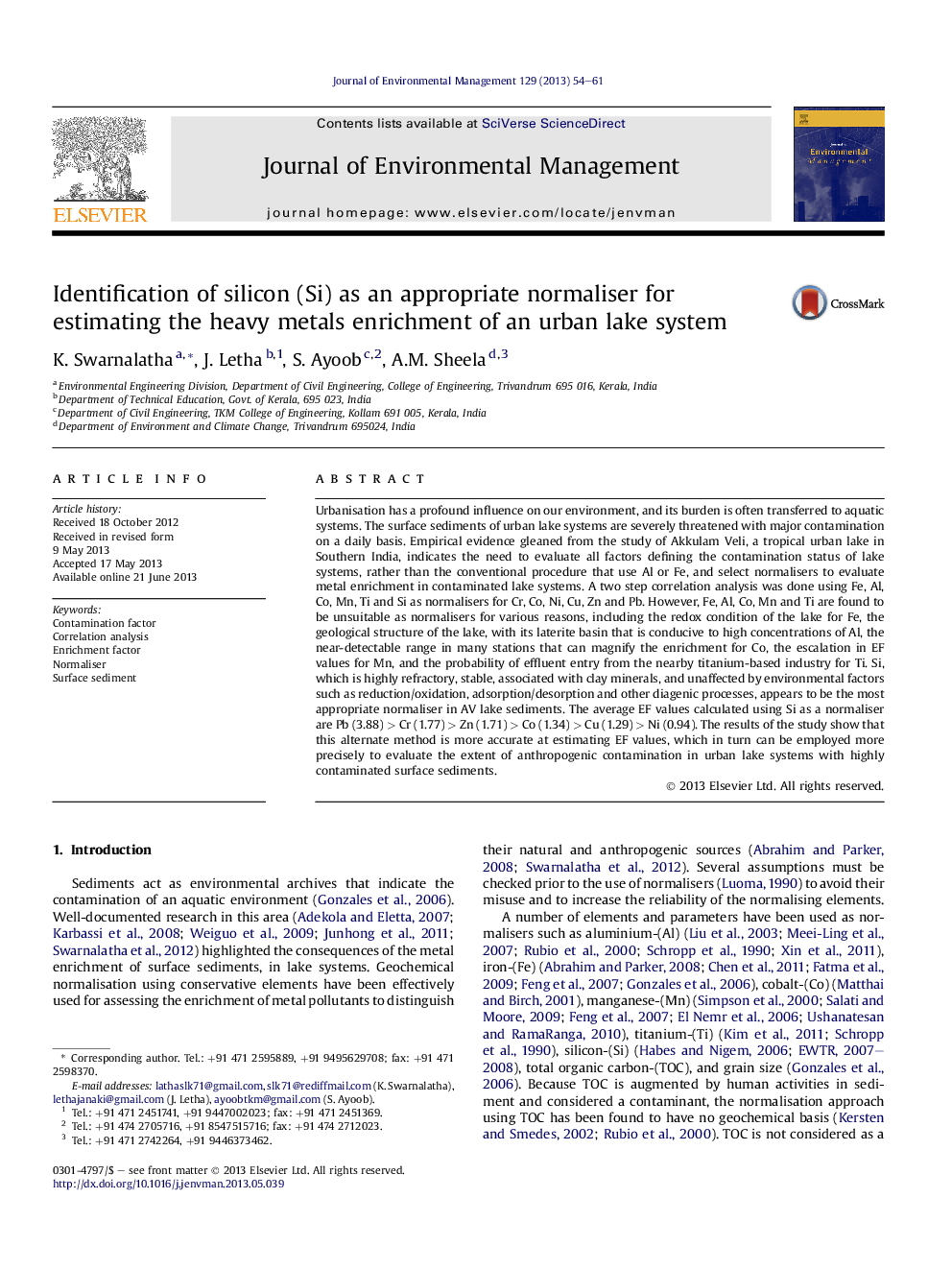| Article ID | Journal | Published Year | Pages | File Type |
|---|---|---|---|---|
| 1056144 | Journal of Environmental Management | 2013 | 8 Pages |
Abstract
Urbanisation has a profound influence on our environment, and its burden is often transferred to aquatic systems. The surface sediments of urban lake systems are severely threatened with major contamination on a daily basis. Empirical evidence gleaned from the study of Akkulam Veli, a tropical urban lake in Southern India, indicates the need to evaluate all factors defining the contamination status of lake systems, rather than the conventional procedure that use Al or Fe, and select normalisers to evaluate metal enrichment in contaminated lake systems. A two step correlation analysis was done using Fe, Al, Co, Mn, Ti and Si as normalisers for Cr, Co, Ni, Cu, Zn and Pb. However, Fe, Al, Co, Mn and Ti are found to be unsuitable as normalisers for various reasons, including the redox condition of the lake for Fe, the geological structure of the lake, with its laterite basin that is conducive to high concentrations of Al, the near-detectable range in many stations that can magnify the enrichment for Co, the escalation in EF values for Mn, and the probability of effluent entry from the nearby titanium-based industry for Ti. Si, which is highly refractory, stable, associated with clay minerals, and unaffected by environmental factors such as reduction/oxidation, adsorption/desorption and other diagenic processes, appears to be the most appropriate normaliser in AV lake sediments. The average EF values calculated using Si as a normaliser are Pb (3.88)Â >Â Cr (1.77)Â >Â Zn (1.71)Â >Â Co (1.34)Â >Â Cu (1.29)Â >Â Ni (0.94). The results of the study show that this alternate method is more accurate at estimating EF values, which in turn can be employed more precisely to evaluate the extent of anthropogenic contamination in urban lake systems with highly contaminated surface sediments.
Related Topics
Physical Sciences and Engineering
Energy
Renewable Energy, Sustainability and the Environment
Authors
K. Swarnalatha, J. Letha, S. Ayoob, A.M. Sheela,
